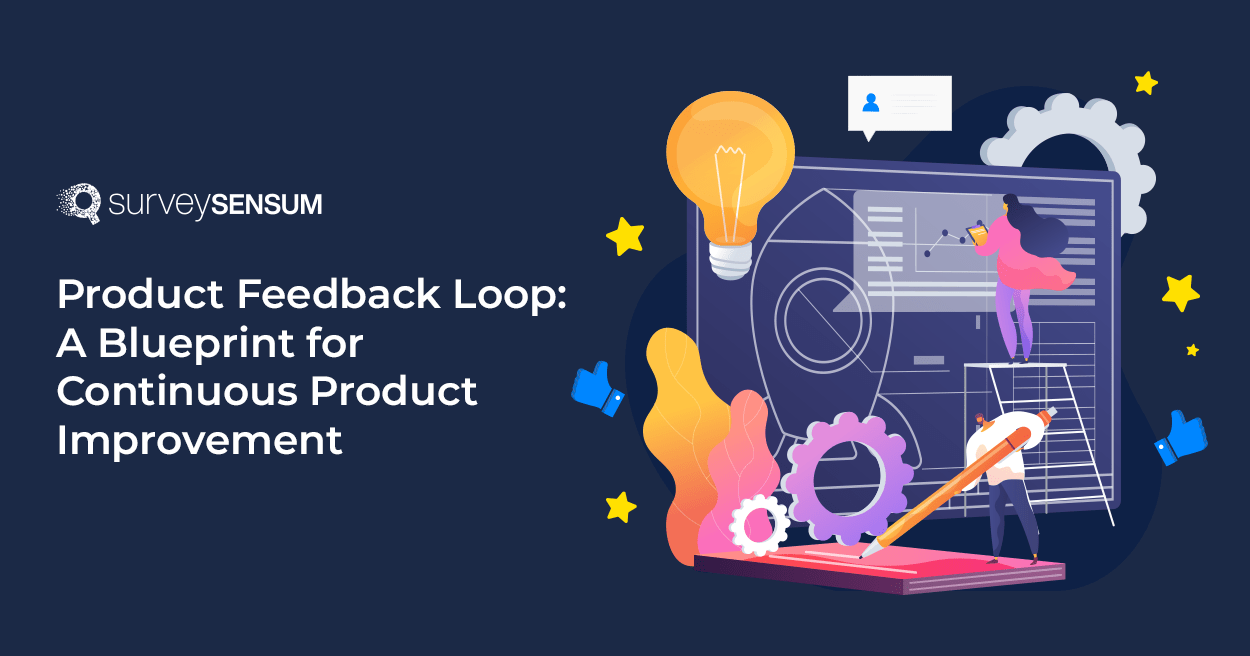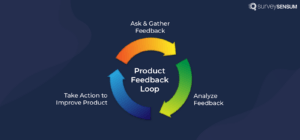9 Ways to Improve NPS Response Rates
Read More

Have you ever wondered how the most successful SaaS products continue to thrive and meet the ever-evolving customer needs? To answer this, we explore three key questions that product developers commonly face:
These questions hold the key to elevating your product’s success. But how will you ask these questions from your users?
By leveraging the product feedback tools. Why?
Because this platform excels in implementing Product Feedback Loop.
This powerful mechanism empowers product developers to gather, analyze, and act upon feedback from users and stakeholders. It’s the key to resolving these challenges and driving feedback-driven development that can elevate your product from good to outstanding.
In this blog, we’ll uncover how the feedback loop seamlessly addresses these questions and explore how a feedback-centric approach can propel your product’s success.
What is a Product Feedback Loop?
Why is a Product Feedback Loop Important?
How to Build the Product Feedback Loop: Four stages
Best Practices for Building and Managing a Product Feedback Loop

The product feedback loop is a continuous process that begins by building a product on which you should take regular feedback to check if it meets customers’ expectations. If they do, you keep going. If not, you learn from their feedback and work on your product to make it better.
This way, your product stays in tune with what customers want, making it more likely to succeed.
But do you think it is crucial?
Let’s find it out here.
Here are the reasons that make the product feedback loop so important:
By maintaining the product feedback loop, you will not only gain happy users but also get positive reviews, and referrals, leading to overall business growth and success.
Now you must be thinking about how to implement it right?
Here are the four steps.
Let’s understand this section with the product feedback loop example. Imagine you have a B2B tool for project management. Your customers are various companies who use your product to streamline their work. Now to create a robust feedback loop, you start by collecting feedback.
Here’s how to collect feedback to enhance the product management feedback loop:
→ To gather feedback about your software tool you can launch a product survey via SurveySensum that lets you gather feedback from multiple channels including WhatsApp surveys, email surveys, SMS, etc.
Once you’ve collected feedback from your B2B customers, it’s time to analyze it. This means digging into the qualitative feedback – which takes hours.
Use Text Analytics software. It swiftly analyzes thousands of feedback responses and gives you top trends and sentiments in mere seconds.
With no more manual coding, you get the insights quickly and can close the feedback in time – leading to customer satisfaction and loyalty.
After analyzing the feedback, it’s time to act on it and include it in your product roadmap. Share and discuss the feedback and its insights with your internal teams. Together, you make strategies to enhance customer satisfaction.
Also, you should work on eliminating common issues with your team, like improving project progress tracking and fixing bugs. This could also involve A/B testing where you create two different versions of the project tracking feature based on customer feedback. This helps you figure out which version works best for your customers.
Now you should follow up with your customers to know their satisfaction level post-changes, and then close the feedback loop. This shows that you’re listening to them and making the changes to enhance their experience. To do that effectively, you should reach out to your customers who provide feedback, and let them know that you’ve made improvements to address their concerns.
In addition, you can encourage them to share their feedback again after using the updated feature. Their input remains valuable for ongoing improvements.
Not just that. After significant updates and bug fixes, involve your marketing teams to spread the word across various social media platforms.
This communication demonstrates your commitment to customer satisfaction and closes the feedback loop effectively.
Close the Product Feedback Loop – Request a Demo
With that, let’s move ahead and learn about best practices.
When it comes to creating a good product feedback loop, there are some essential practices to keep in mind as follows:
By following these practices, you can build a strong and effective product feedback loop that keeps your customers happy and your product in tune with their needs.
A strong product feedback loop is crucial for businesses. It connects what customers want with product improvements, fostering product innovation. All you have to do is constantly listen to your customers and improve your product. A good product feedback loop improves products and keeps customers loyal, leading to business success.
So, implement the product feedback loop in your business to enhance customer retention, foster organic marketing through word of mouth, and, ultimately, increase profitability.
